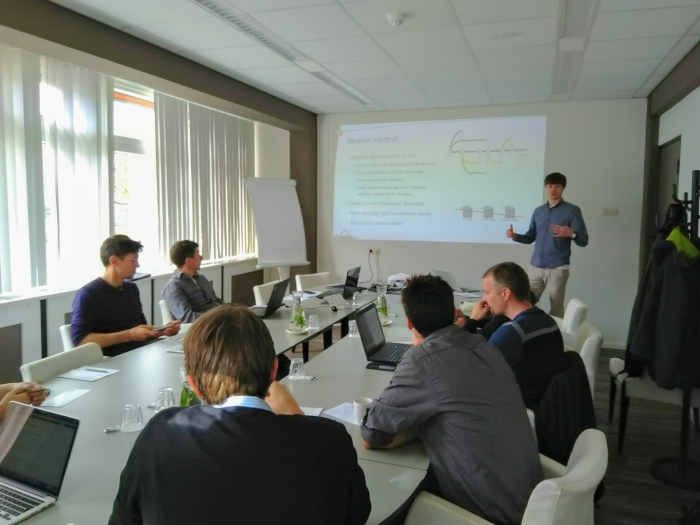
On 18 March FutureWater organized the first SPHY-model User Day for core developers and users of the SPHY-model. Ten core developers and users from FutureWater, Utrecht University, Wageningen University & Research and CEBAS Spain gathered at the Wageningen International Congress Centre to discuss the upcoming new release of SPHY and the way forward for effective collaboration and co-development of the model.
FutureWater started the development of the Spatial Processes in Hydrology (SPHY) model back in 2005 with the first version of FutureView. Over the years FutureWater developed the modelling suite further and since 2012 the modelling suite is known as SPHY. It is a fully distributed physics based modular hydrological model proven to be suitable for a wide range of applications all over the world, with particular suitability for data-scarce areas. It is used in research as well as consultancy assignments in the fields of climate change impacts, hydropower and river basin and watershed management. Over the last years multiple other organizations outside FutureWater started to develop new components for SPHY.

Dr. Joris Eeckhout (CEBAS, Spain) presented the new features and structure of the upcoming SPHY release (SPHY v3.0), which features new modules to simulate soil erosion processes. Other participants of the SPHY model user day presented their SPHY development and application plans for the upcoming year. Planned developments include improved routing for better simulation of extreme events, improved snow and glacier melt routines, and a hydropower production module. A significant part of the day was dedicated to a discussion on the way forward for efficient co-development of SPHY by the different involved organizations.
FutureWater is now working on an improved version management environment to facilitate efficient co-development of SPHY. The participants agreed to make the SPHY-model User Day an annually recurring event to enhance the exchange of knowledge and best practices in the use and development of SPHY.

